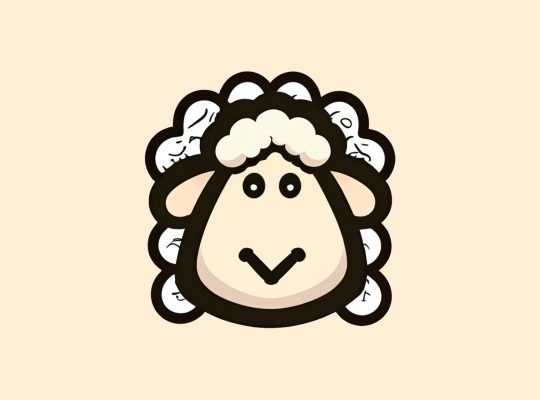Imagine this: you walk onto a crowded festival grounds, the music is popping out of the speakers, people are shouting through each other, and you simply presses an imaginary “off” button in your head. Suddenly it’s quiet. No more banging, no more screaming, just peace. Sounds like science fiction, right? But in the animal world, this is not a crazy idea at all. Some animals, like meerkats, have a fascinating trick: they can temporarily plug their ears. And that’s not just handy – it can be vital.
In this blog, we dive into the question: what if we humans could do the same? How does that work in animals? What would it do for us? And why didn’t our ears ever get such a clever “plugging” function in the first place?
How do meerkats actually do that?
Let’s start at the beginning: the meerkat. These small, hyper-alert animals live in colonies in the deserts of southern Africa. Their days consist largely of digging, rooting and watchful watching – always on the lookout for insects and always on their guard against predators. And it is precisely during that digging that their special ear trick comes in handy.
Meerkats can temporarily close their ear canals by tightening a small muscle around their ear opening. This prevents sand and dust from entering when they are digging fanatically. As soon as the digging is finished, they relax the muscle again and can immediately listen again to everything around them. It’s a super simple, but hugely effective adaptation.
Evolutionary logic: why we can’t
If meerkats can do that, why can’t we? There are several evolutionary explanations for this. For example, we humans have not felt the need to protect our ear canal from sandstorms or soil because our hands do that work for us. In addition, we have a relatively long and curved ear canal that already provides some protection.
Also, our survival strategy is different: instead, we rely heavily on constant auditory vigilance. Sounds warn us of danger, help us communicate and ensure we understand the world around us. A “disabling” auditory canal could complicate that. Yet there are some subtle mechanisms in us that are somewhat similar to that principle.
People can do it (a little) too
Although we cannot consciously close our ear canal like a meerkat does, our body has a few built-in ways to protect or muffle our hearing. For example, we have the
In addition, some people – a small minority – may consciously tighten their tensor tympani muscle. This produces a kind of dull feeling in the ear and temporarily reduces the sound level. It is not the same as plugging your ears, but it does show that our hearing is not entirely “passive.”
How convenient would it be if we could?
Let’s fantasize for a moment. Suppose, like meerkats, we could close our ear canals whenever we wanted. What would that mean in everyday life? More than you might think.
1. Festivals and concerts
No more panicking about hearing damage or tinnitus afterwards. Standing close to the speakers? Click: hearing mode at 50%. Want to talk to someone during a performance? Click: ears open again.
2. Busy workplaces
Do you work on a noisy construction site or in a factory? No more hassle with earplugs or earmuffs. You simply close your ears as soon as the noise level gets too high – and open them again as soon as someone talks to you.
3. Sleep and concentration
Sleepless nights due to street noise or snoring partners would be a thing of the past. Even while studying or working, you could just literally shut out unwanted sounds.
4. Traveling and flying
One of the most annoying things about flying is pressure on your ears. If we could temporarily close (or just open) our ear canal, we might be able to regulate that pressure better. And consider train travel or crowded airports: one-click silence.
The downside of ‘switchable ears’
It all sounds great, but there are drawbacks. Imagine shutting off your ears at a concert and therefore not hearing the fire alarm. Or missing an approaching ambulance in traffic. After all, our hearing is not just a comfort function – it is a crucial part of our safety.
On top of that, sound plays a major role in our social interaction. Having a conversation, hearing emotion in a voice, enjoying music or simply knowing that someone is calling your name – all depend on your hearing. If we could just “turn that off,” we might do it too often.
What we can do: hearing control
Until we biologically evolve into people with “meerkat ears,” we will have to make do with other solutions to protect and regulate our hearing. And fortunately, there are plenty of those:
- Earplugs with filters: They muffle loud noises without shutting everything off. Perfect for concerts, festivals or noisy workplaces.
- Ear muffs: Ideal for situations where you need complete silence, such as when concentrating or sleeping.
- Custom hearing protection: It fits seamlessly to your ear canal and offers the best balance of protection and comfort.
In a sense, these tools are our modern replacement for the cane mechanism. They give us control over how much sound we allow – without having to change our anatomy.
What meerkats teach us about hearing
The fact that a small desert animal found a simple solution to a potentially big problem shows how ingenious nature is. Where we need technological tools, they use a muscle. And who knows: maybe one day it will be possible to consciously “close” our ears using biotechnology or implants. Scientists are already experimenting with ways to dynamically adjust the ear canal – what is science fiction today may just be reality decades from now.
A quiet dream (for now)
The idea that we could plug our ears like a meerkat is both fascinating and enticing. It would make our lives easier, better protect our hearing and give us more control over how we experience sound. But at the same time, we would lose some of our alertness and social connection.
So for now, we continue to rely on hearing protection and smart technologies to give our ears a helping hand. Still, it’s an interesting exercise in imagination – and a reminder of how valuable (and vulnerable) our hearing actually is. We may not be able to shut it off with a muscle, but we can protect it. And that’s just as important.
What would you do if you could close your ears? Let us know in the comments!








